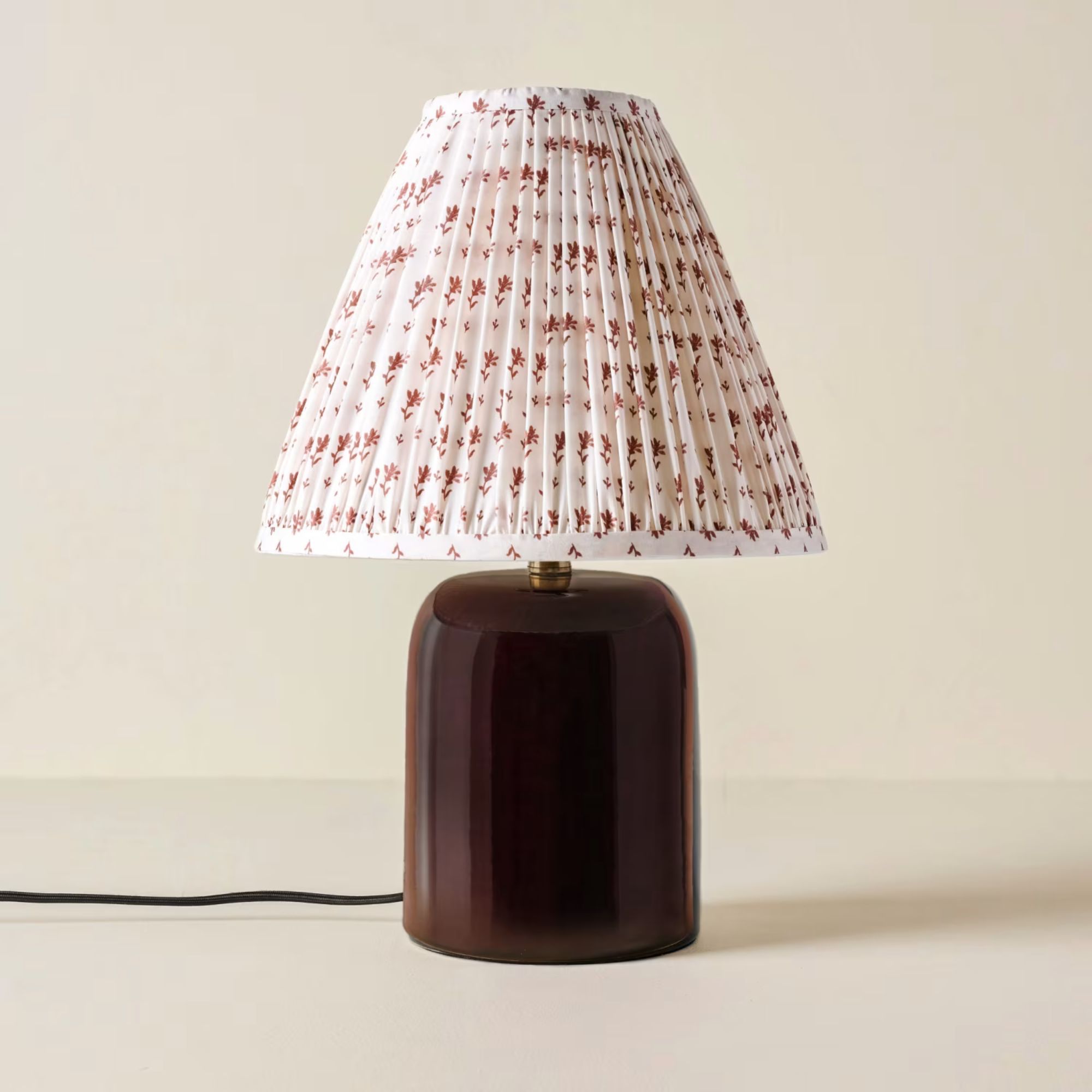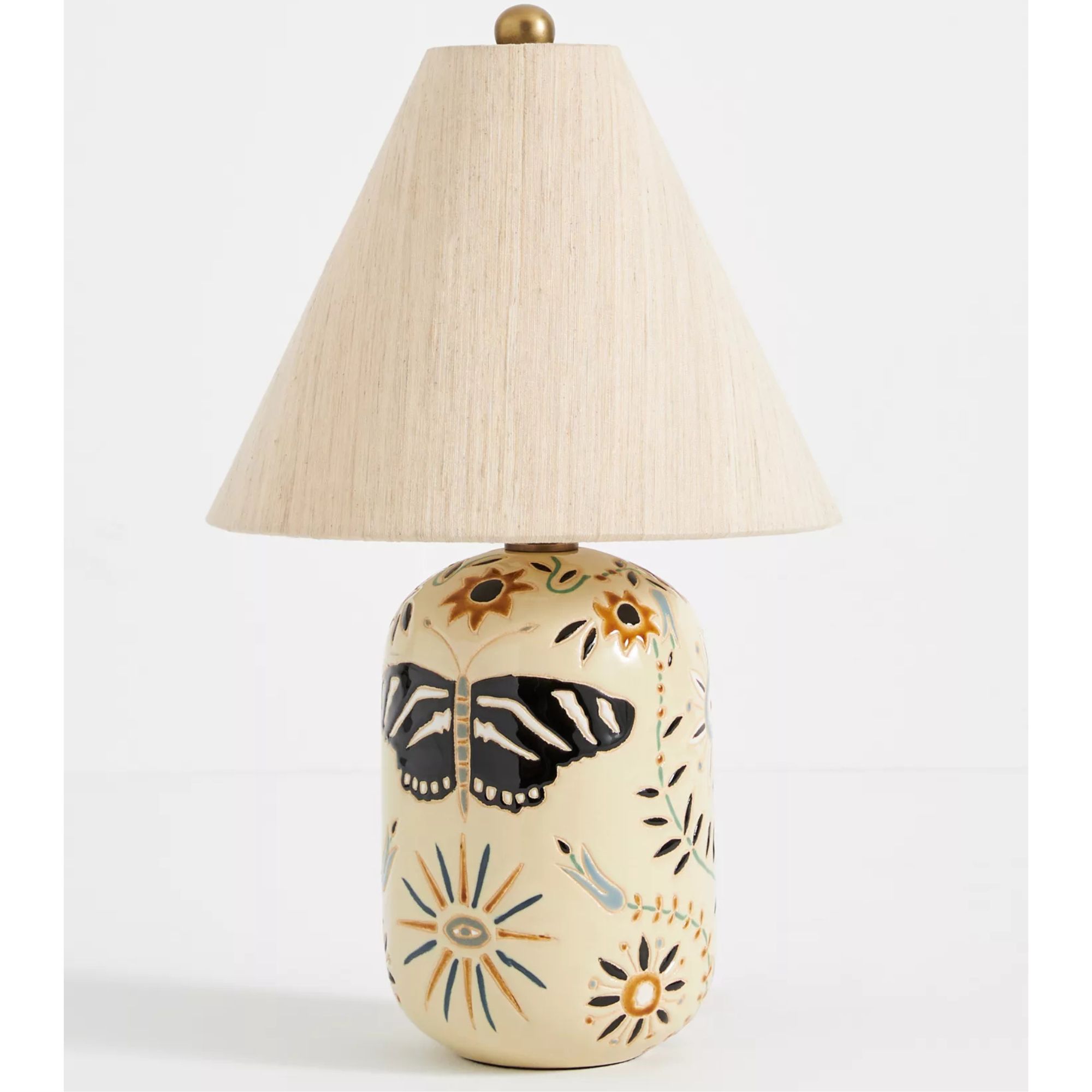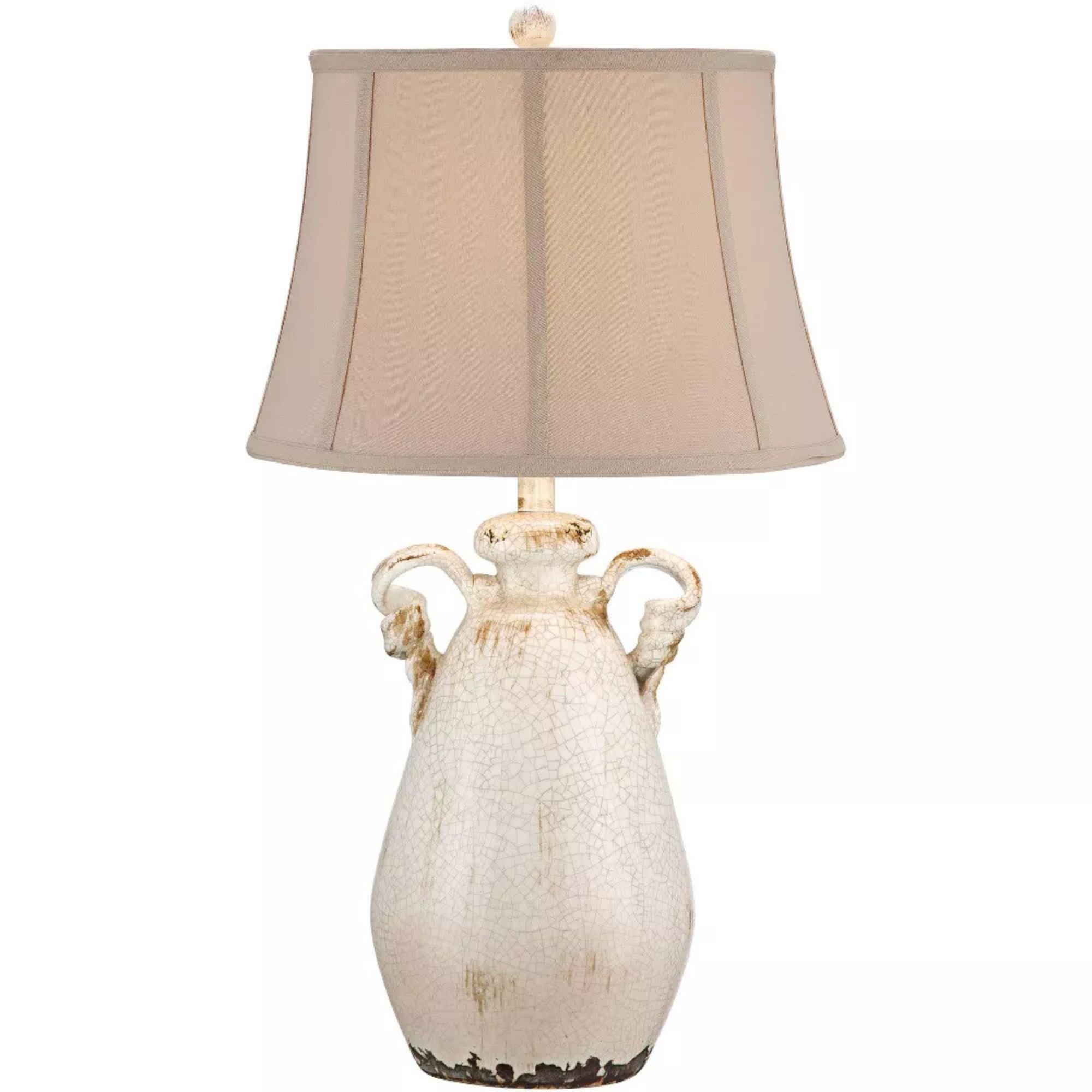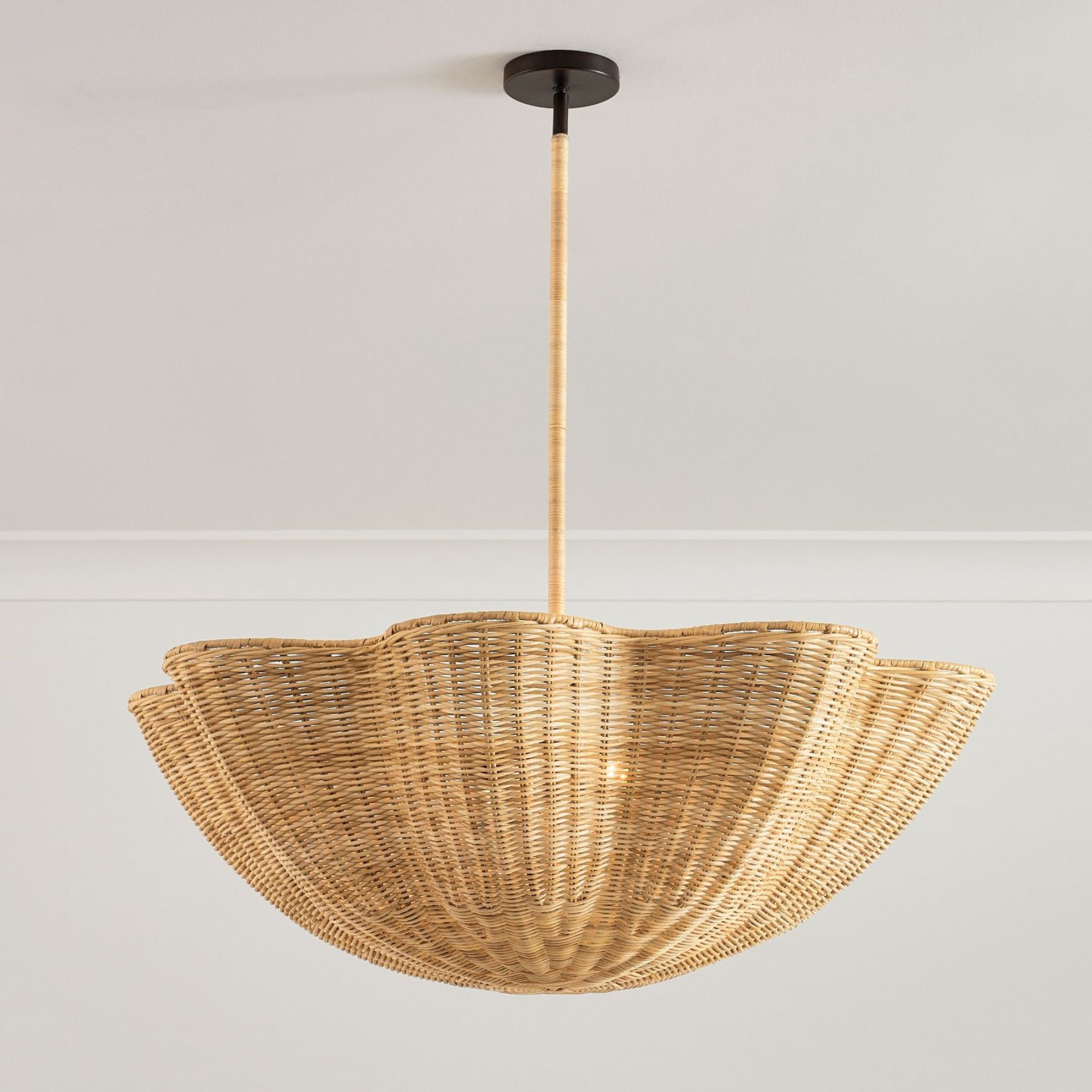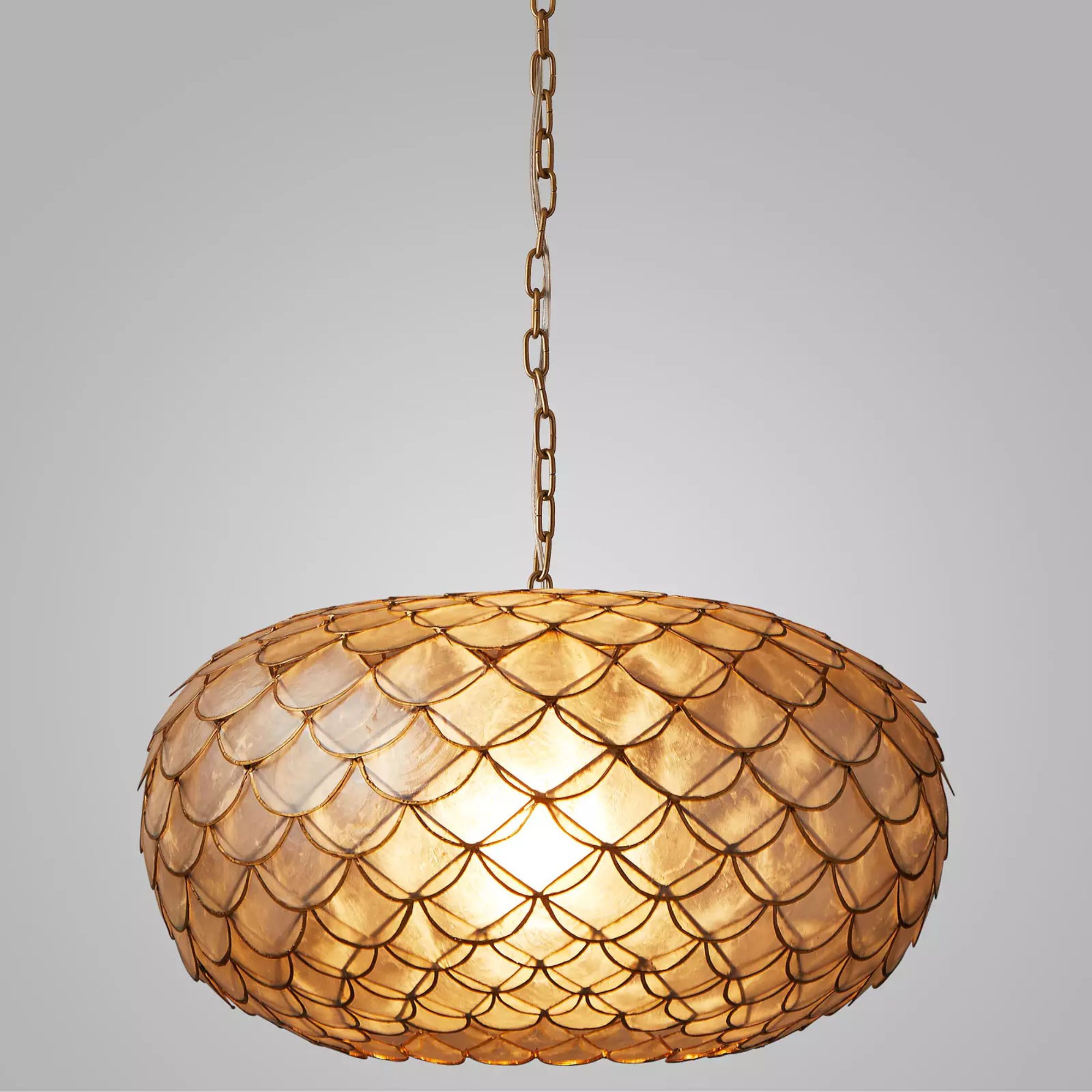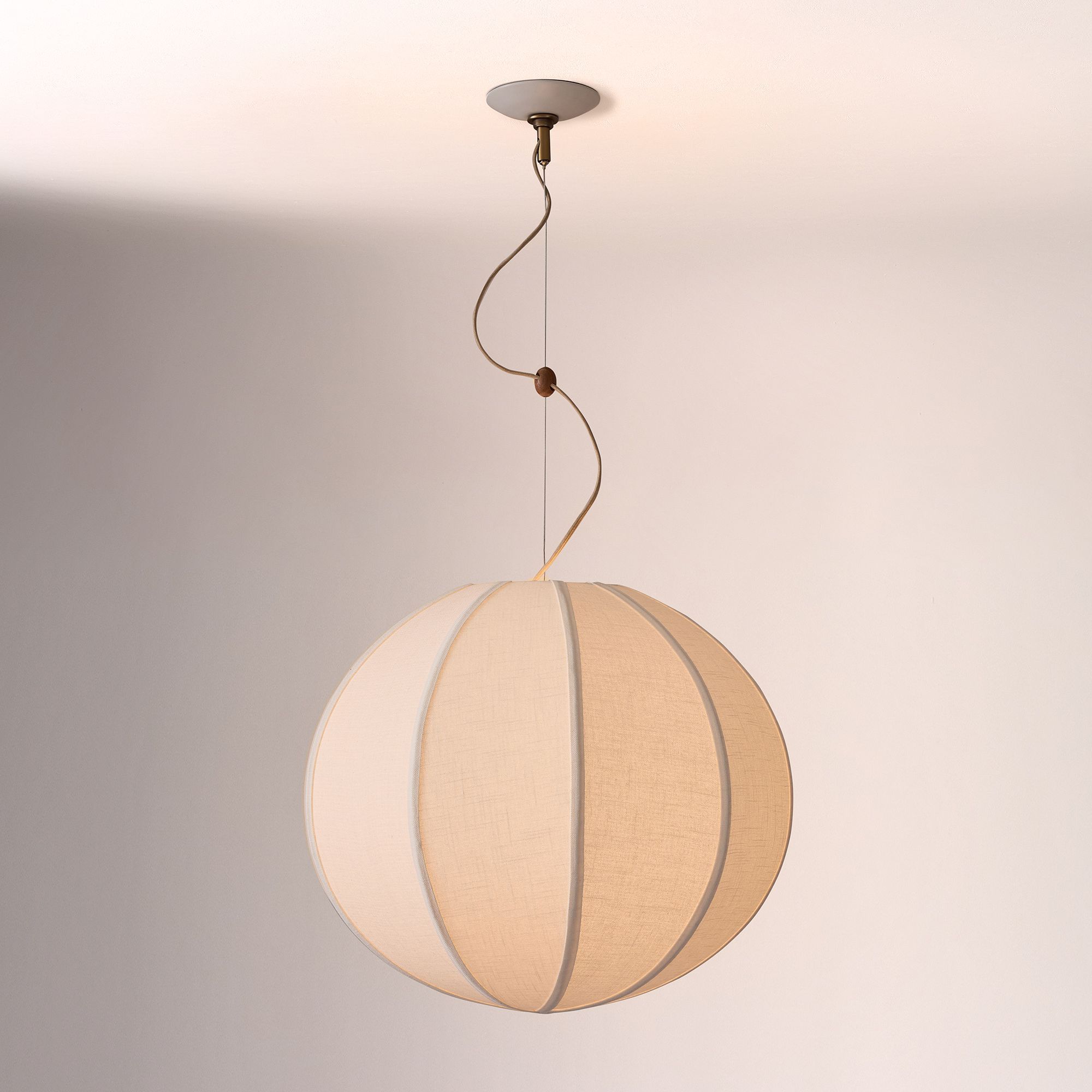Bedroom lighting ideas – 18 unique and stylish ways to light your sleep space
Create a calming and inviting bedroom with these lighting options suggested by interior design experts

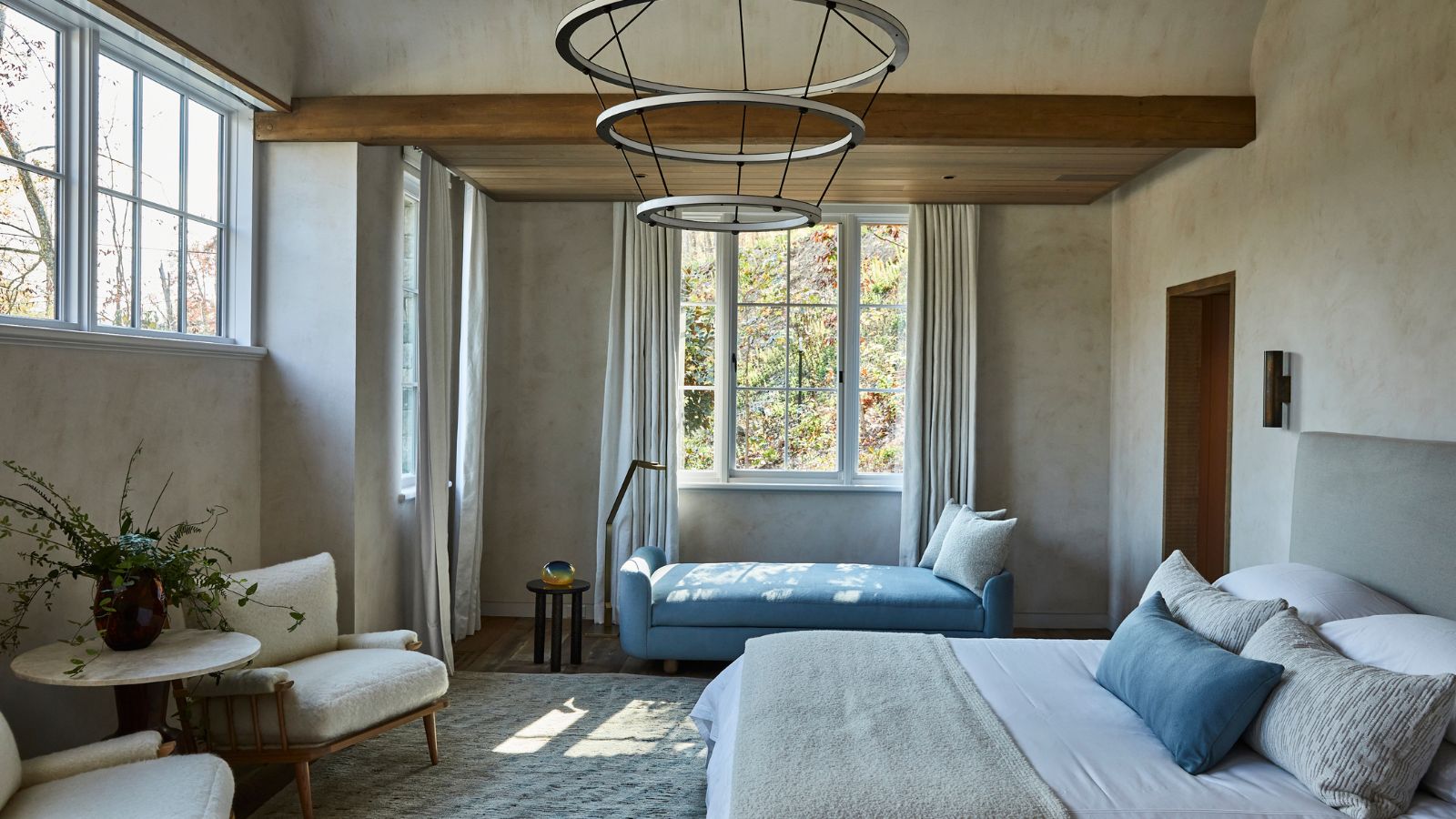
- 1. Layer lighting
- 2. Light the space according to its size
- 3. If space allows, set up a statement floor lamp
- 4. Introduce adjustable light fixtures
- 5. Give yourself plenty of lighting options
- 6. Consider your needs by incorporating task lighting
- 7. Light the way in a dressing room
- 8. Make a statement with bedside lighting
- 9. Install wall lights
- 10. Consider gentle window treatments
- 11. Incorporate lights into your joinery
- 12. Install a statement pendant
- 13. Light a focal point
- 14. Zone your bedroom lighting
- 15. Hang pendants above or beside the bed
- 16. Choose ambient wall lights
- 17. Consider non-conventional lighting like candles
- 18. Go classic with a large chandelier
- Shop our bedroom lighting edit
- FAQs
Lighting is integral to a successful bedroom design, as it can help to transform the space into a truly tranquil and inviting retreat. Layering a mix of lighting will ensure the utmost ambiance, providing multiple options to suit your needs.
Bedroom ideas and lighting ideas go hand in hand. While you may initially imagine a boudoir with a pretty chandelier, there is much more to bedroom lighting design than just one statement pendant. Incorporating multiple options will not only improve the look and feel of your bedroom but also help your daily well-being and sleep cycle, too – and these factors are just as important as aesthetics.
'Layering your lighting is the key to creating the perfect balance of warmth, coziness, and function in your home,' says Rohan Blacker, founder of lighting brand Pooky. 'This is particularly important in a bedroom as you will need a combination of task and ambient lighting solutions for relaxation, reading, or getting dressed.'
18 of our favorite bedroom lighting ideas
We've curated the best bedroom lighting ideas to help you on your way to creating a dreamy bedroom scheme.
1. Layer lighting
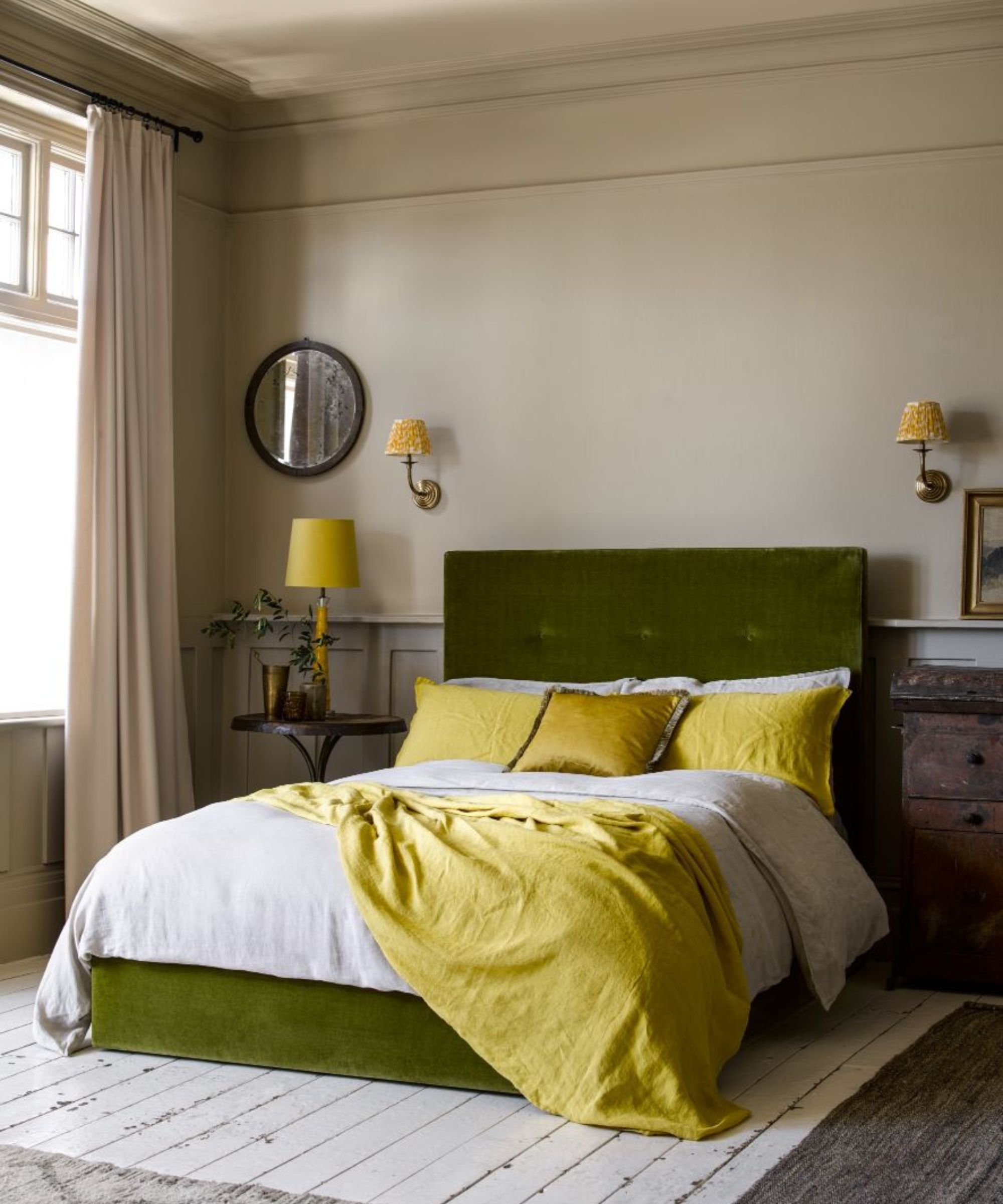
Before designing your bedroom layout, it's worth considering the multiple layers of lighting you will need according to your needs and day-to-day routine.
According to Chris Jordan, Managing Director at Christopher Wray; 'Flexibility is a key part of designing a lighting scheme for the bedroom. Layering different lighting solutions, such as table and floor lamps with wall or bedroom ceiling light ideas will help you achieve this. Installing multiple varieties will ensure you can adjust the lighting to reflect the mood with ease.
‘I always layer lights in a bedroom design,’ adds Sara Johnson of Sara Johnson Interiors. Adding, ‘Overhead lights, but never a light on a fan, pretty lamps that flank the bed, and wall-mounted reading lights that are easy to switch off when laying in bed.’
Design expertise in your inbox – from inspiring decorating ideas and beautiful celebrity homes to practical gardening advice and shopping round-ups.
2. Light the space according to its size
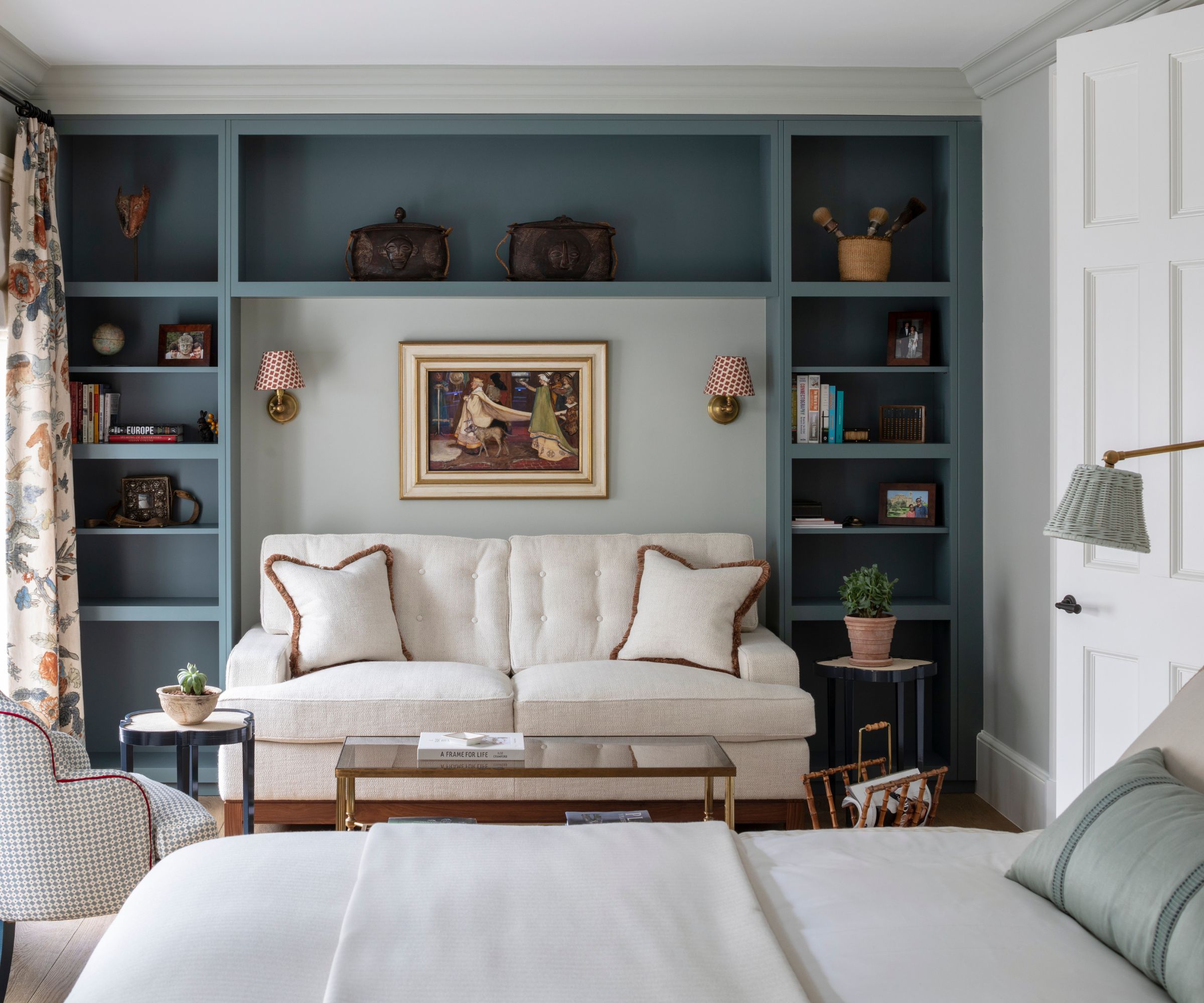
While it may seem obvious, it's a good idea to consider the size of your bedroom before shopping for lighting and exploring the latest lighting trends.
You may not have room for a large floor lamp or chandelier for small bedroom lighting ideas, but in a large suite, you'll need to consider more lighting choices as you'll be working with more surface area.
‘The best lighting for a bedroom will depend on how large it is and how many functions it is serving,’ begins Katie Lion, senior interior designer at Kitesgrove.
‘For example, small bedrooms might only need a pendant and wall lights for bedsides to increase bedside table surface space, while a larger bedroom has more space to create different focal points, such as an inviting armchair with a floor lamp or task lighting to illuminate spaces such as desks or wardrobes.’
3. If space allows, set up a statement floor lamp
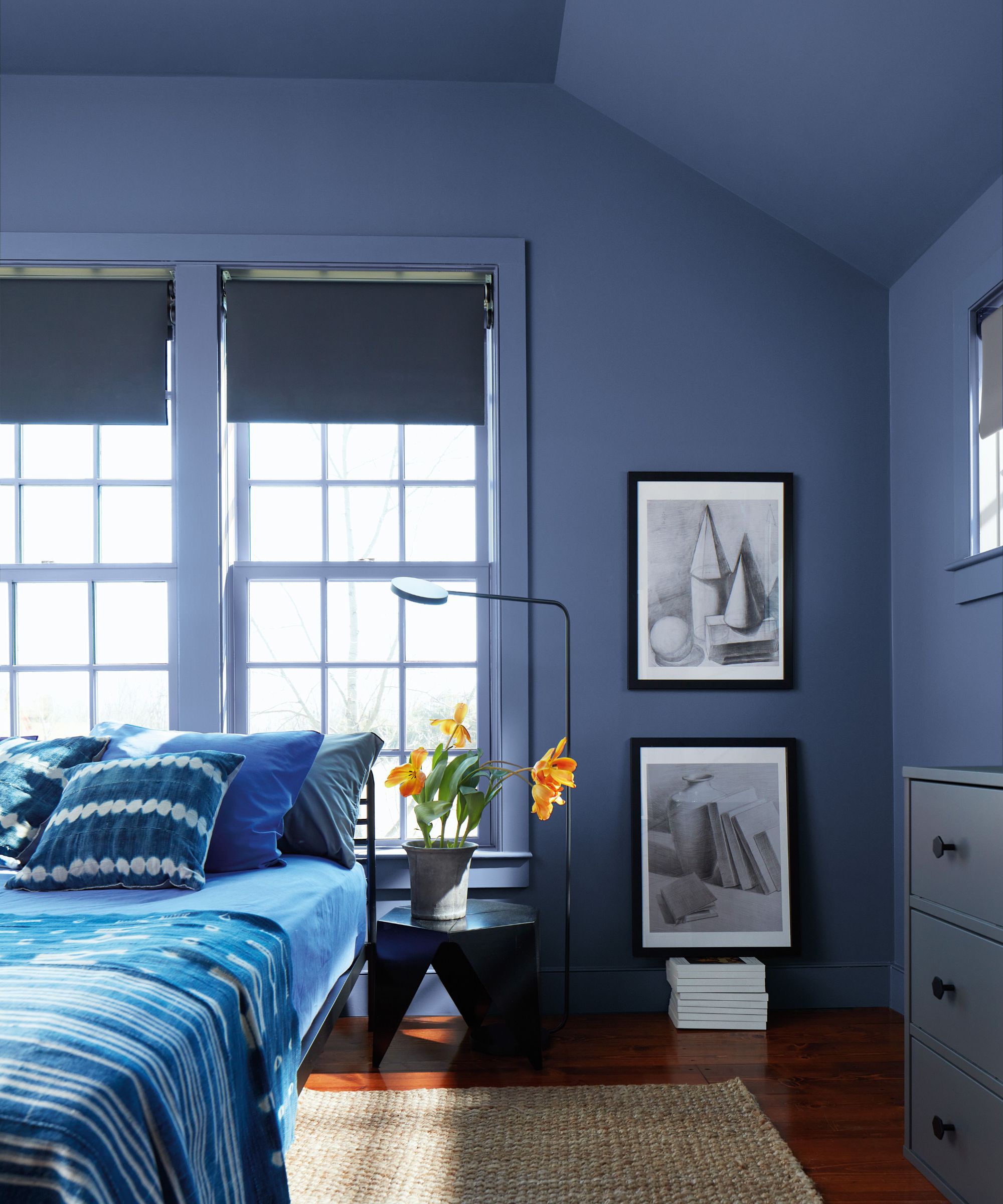
Whether it's a midcentury metal lamp or a brass lamp with a stained glass shade, floor lamps come in all styles, making them a welcome addition to any bedroom design.
Floor lamps are a great way to light a room, avoiding that stark feeling that sometimes comes with overhead lighting.
However, you should consider the ceiling height of your bedroom, as anything too tall could dominate and disrupt the space.
If space is not a problem, a striking floor light will allow for a beautiful statement feature in the bedroom, perfect for establishing a cozy reading nook.
Accent lighting should be controlled on a separate circuit from the ambient lighting and should generally be at least three times brighter.
4. Introduce adjustable light fixtures
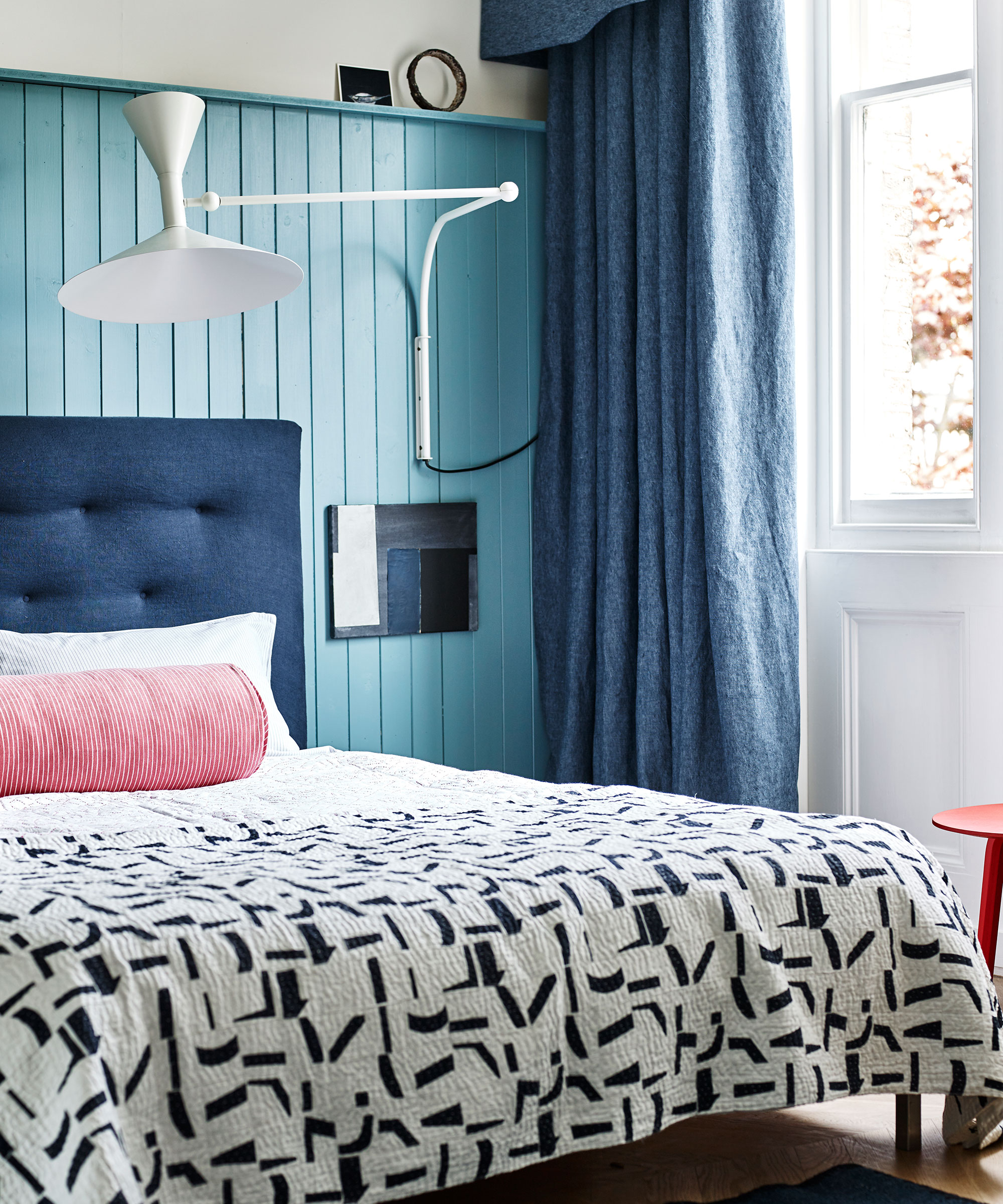
Wondering how to plan bedroom lighting? Good bedroom wall lighting ideas might be what your space requires.
‘Well-planned lighting can make a small bedroom look bigger or a basement bedroom feel as if it is above ground,’ says Sally Storey, Design Director at John Cullen.
If you want to optimize space and prefer a minimal scheme, then wall-hung light fixtures are the best option. Opt for one that is fully adjustable with a far reach that can be dimmed depending on the time of day.
Mara Rypacek Miller, Founder of Industville says, 'Adding dimmers is a great way to ensure you have ultimate control over light levels in a bedroom and it’s always best to opt for warm tones in bulbs (around 2700-3000K) to enhance the relaxing ambiance.'
5. Give yourself plenty of lighting options
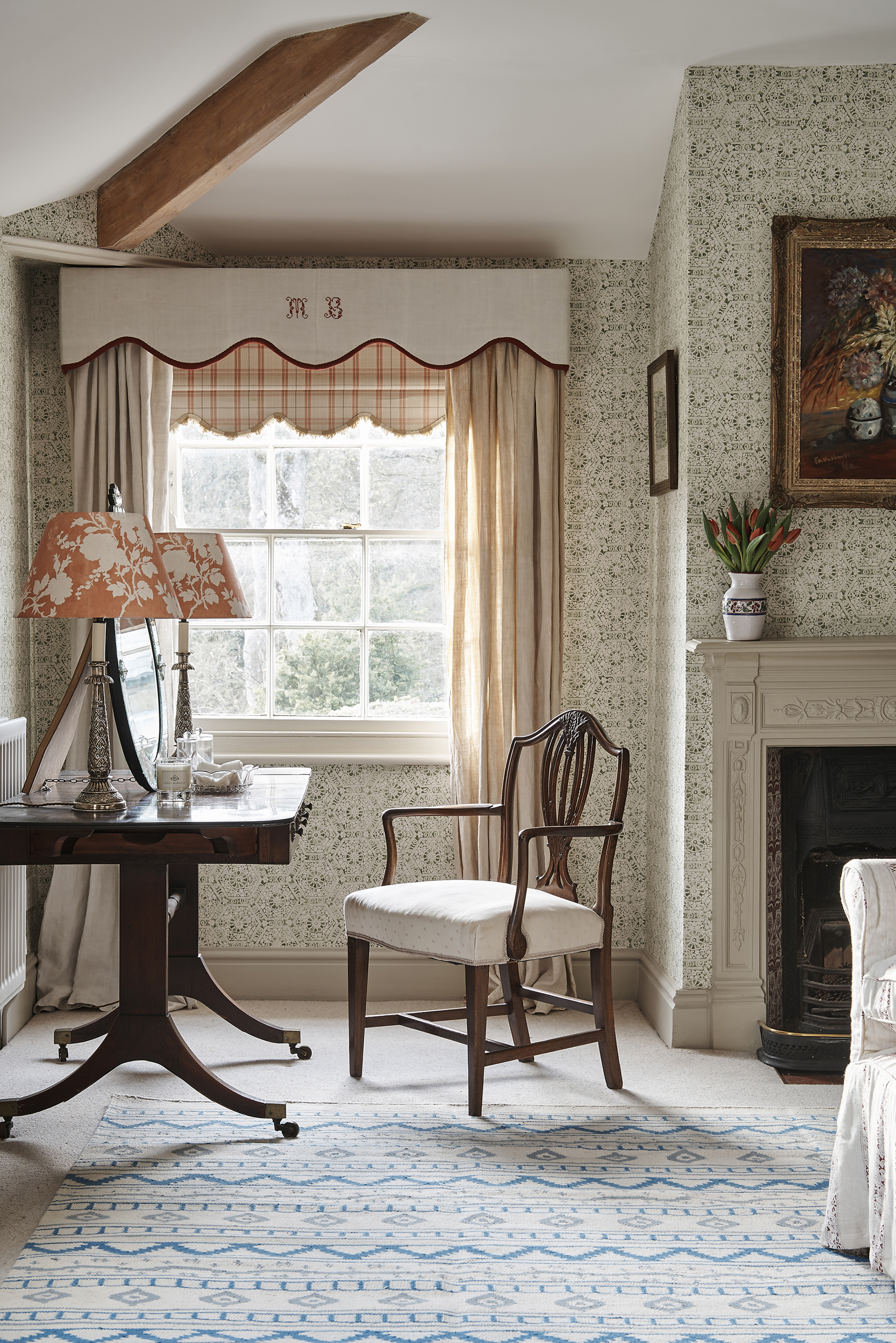
Where lighting is concerned, more is often better. A big part of bedroom Feng Shui, there are many studies that suggest optimal lighting can improve happiness, and positivity and increase energy, so it could prove beneficial to give yourself plenty of options when it comes to lighting.
Of course, natural light will always be considered to be the gold standard, but once the sun sets, artificial light really comes into its own.
In this main bedroom, the vanity desk has been decorated with two table lamps, meaning you're never in short supply of lighting.
'I often double up by combining a task light, such as an Anglepoise, with a lamp on a bedside table or pendant hung above,' explains Interior Designer, Suzy Hoodless. 'I also like to use decorative wall lights as well as a central pendant in bedrooms. They offer an opportunity to create a sculptural look on the walls as well as providing soft, warm light.'
6. Consider your needs by incorporating task lighting
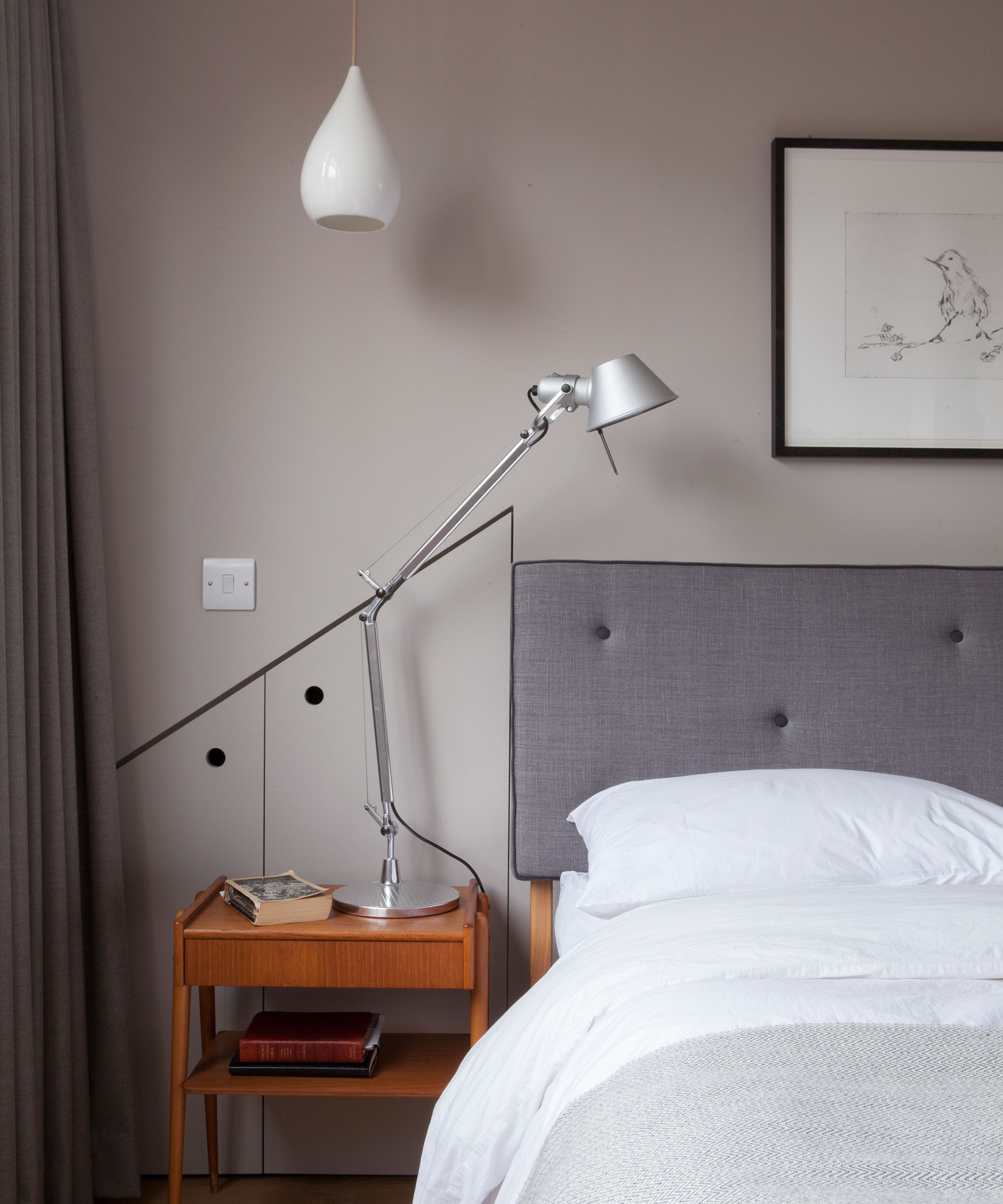
Bedrooms aren't just for sleeping, so it's important to fit lighting that encourages other activities such as reading or getting dressed.
Bedside lamps, like the ones shown in this dark bedroom (pictured above), create the softest light but they may not offer sufficient light to read next to.
‘Task lighting for reading is essential,’ advises interior designer Emma Sims Hilditch. A pair of impactful lamps to highlight a bed is a must. ‘My advice is to go as big as you dare, especially to add drama to a country house scheme.’ Large lamps make a statement and glass options are good, as they don’t look too bulky.
It’s important to have lights that can be controlled independently from each other, so you don’t have to reach over to a sleeping partner to turn off a reading lamp.
While table lamps will work well for your dressing table ideas, it is also important to ‘remember to illuminate areas such as dressing tables, wardrobes and reading nooks where more focused task lighting is required’, explains Charlie Bowles, director of Original BTC.
7. Light the way in a dressing room
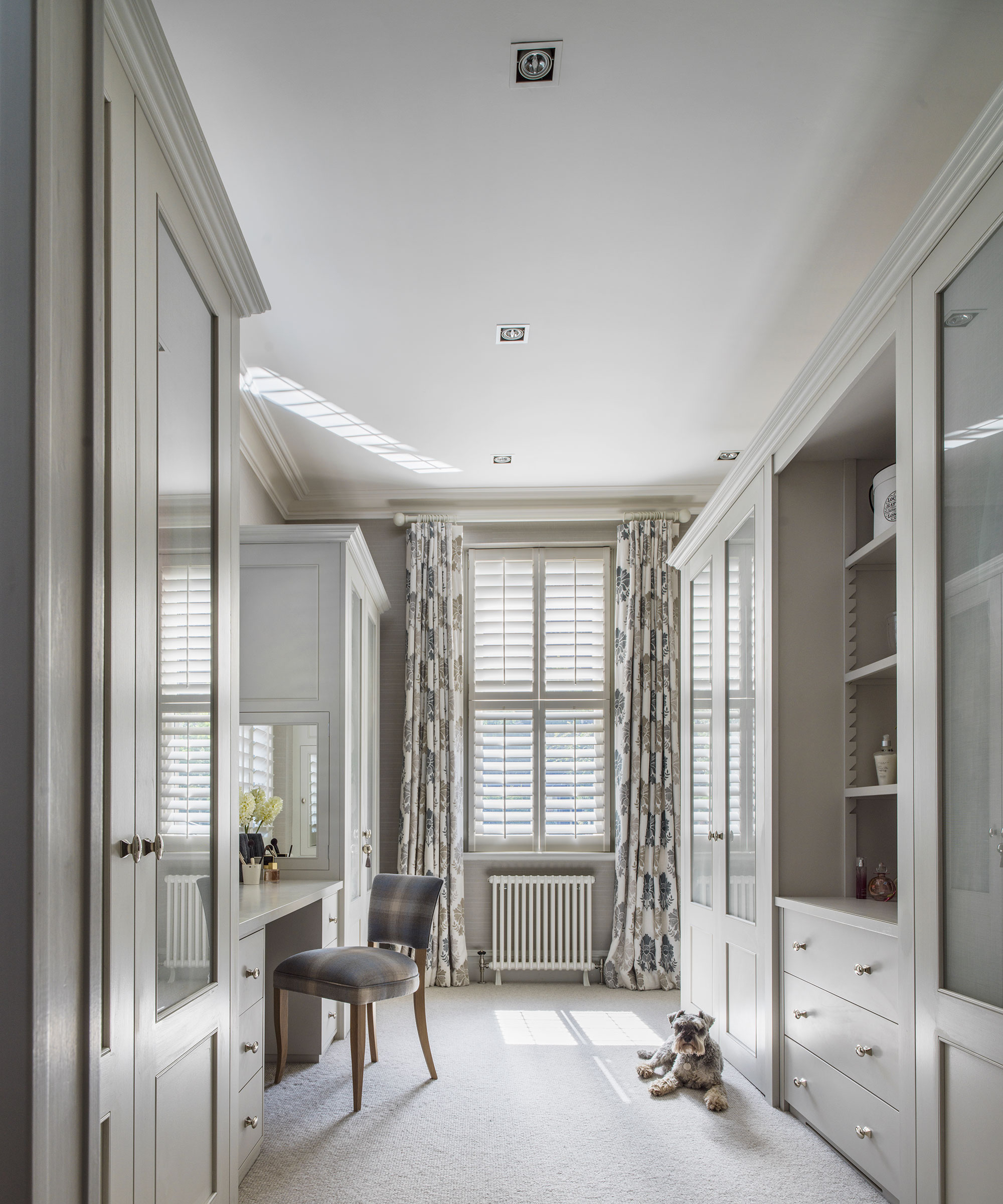
If you're in need of practical lighting to complement your dressing room ideas, think about recessed downlights.
‘I always try to use these sparingly as they can spoil a pretty ceiling’, says Emma Sims Hilditch. ‘Strategic positioning in front of wardrobes can shine a light inside, or, if you are decorating from scratch, I advise wiring a strip of LEDs inside the wardrobe, activated by a switch that comes on when the doors are opened.’
Always ensure lights have a dimmer option; lamps should be on a 5-amp circuit and switches should be placed at the bedside and the door.
8. Make a statement with bedside lighting
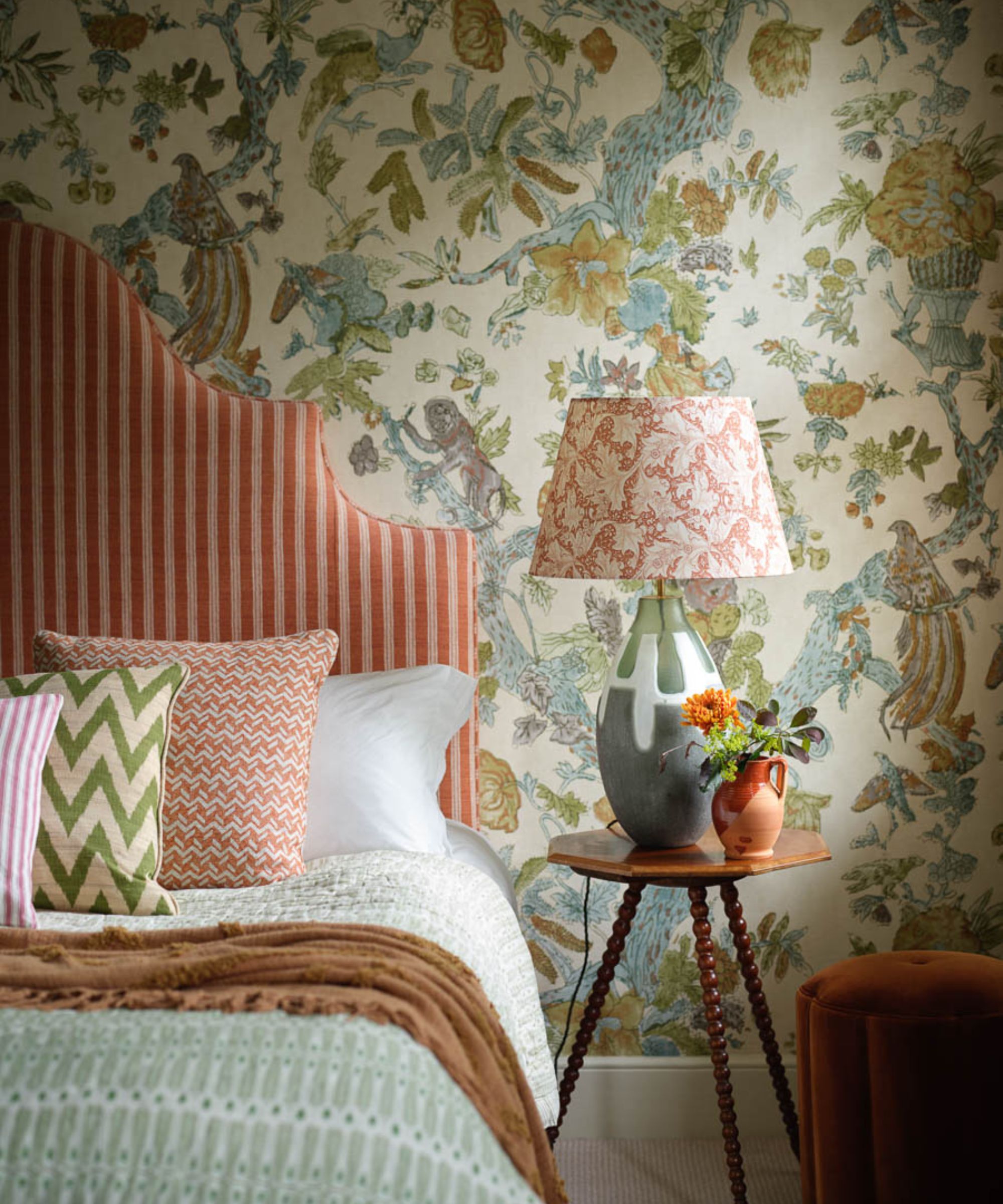
The right table lamps can establish a truly luxurious, hotel-like feel in a bedroom, bringing beautiful shape, character and color to the room room (as well as lighting, of course).
‘It’s vital to consider both ambiance and practicality when lighting a bedroom, especially if it’s a compact space,’ says Lucinda Waterhouse, co-founder of Oka.
'The lights beside your bed are probably the most important in your home. Used daily, they are essential all year round and, what’s more, they are likely to be the most prominent accessories in your bedroom.’
If you are lighting your bedroom for a better night's sleep, place a table lamp on either side of your bed that can be adjusted for bedtime.
Make a statement with a signature piece in a punchy color, or keep things simple with a pared-back classic design.
Jo Plant, Head of Design at Pooky says, 'Lampshades are often an afterthought, but they provide an excellent canvas to express your personality in a space that is uniquely yours, whether that's through color or pattern to with your bed linen and paint to create a visually pleasing haven.
Introducing new patterns or textures into the room using lampshades is a great way to add dimension to the room.'
9. Install wall lights
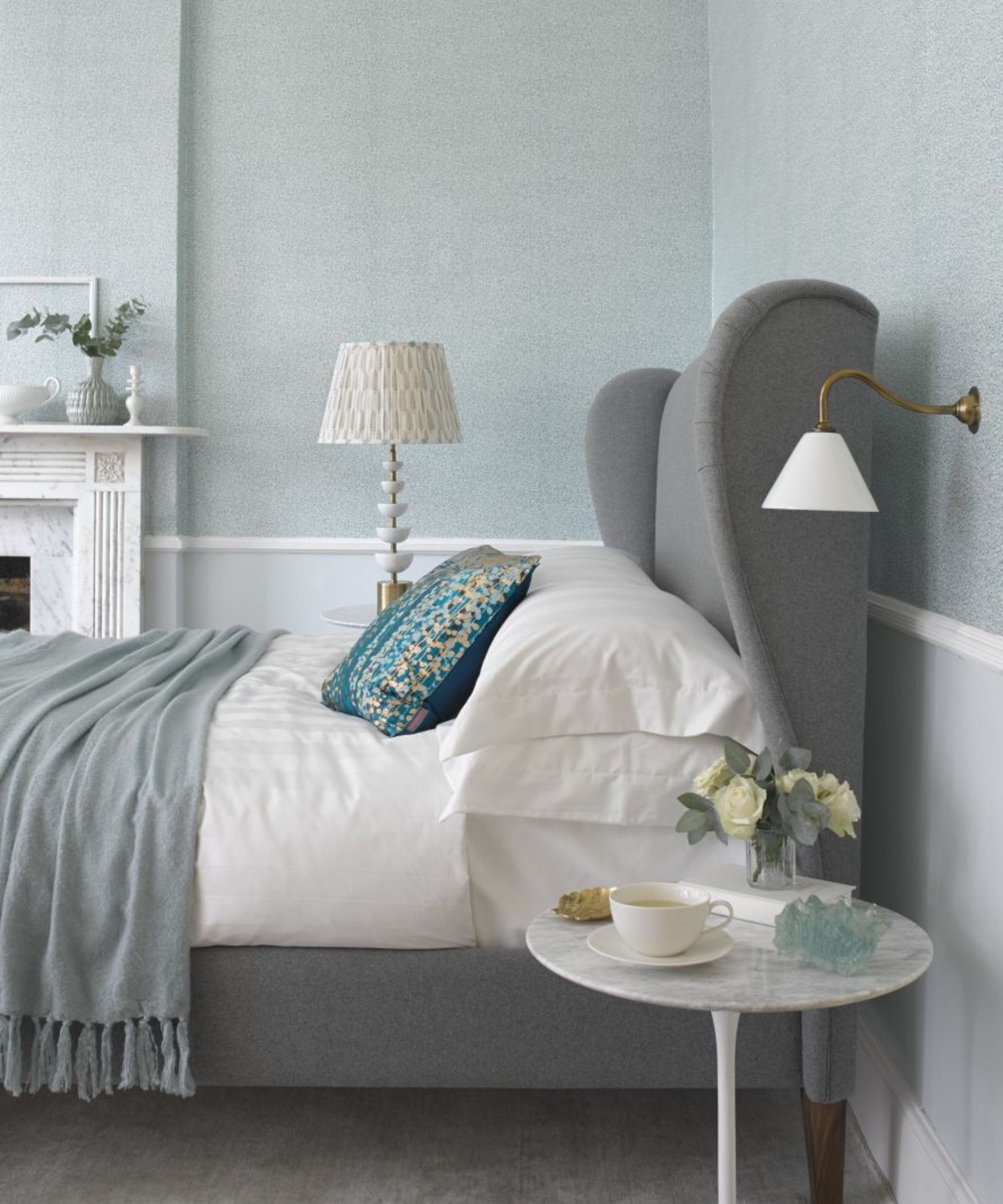
Don’t overlook bedroom wall lighting either. Downlighters especially have become very popular, with an array of different styles, and are perfect for adding interest and ambience to a focal wall.
Wall lighting is a wonderful option if you're looking for ways to illuminate your small bedroom, as it negates the need for floor space.
For those looking to create a restful traditional bedroom, table lamps are a must and according to interior designer Penny Morrison you can never have too many.
'In my view, lighting is key to the atmosphere of a room,' says Penny. 'Use as many wall lights and lamps as the space allows. As well as wall lights you should have down lights on a dimmer switch in each corner of the room – this always makes rooms feel larger and brighter.'
Jo agrees, saying, 'Break the mold of the traditional bedside tables by using a pair of wall lights instead. No need to panic about immediately calling the electrician – rechargeable wall lights are a cheat’s way of achieving this chic look without the commitment and expense of wiring wall light in.'
Helen Pett, Design Ambassador Arteriors says, 'Discrete yet atmospheric, wall lights take little space whilst providing a decorative flourish. We have seen stunning examples of customers using wall lights in pairs or trios along the length of their walls, framing dressing tables, beds, and ornate mirrors, paired alongside floor lamps – all of which elevate the space uniquely while creating various levels of illumination.'
10. Consider gentle window treatments
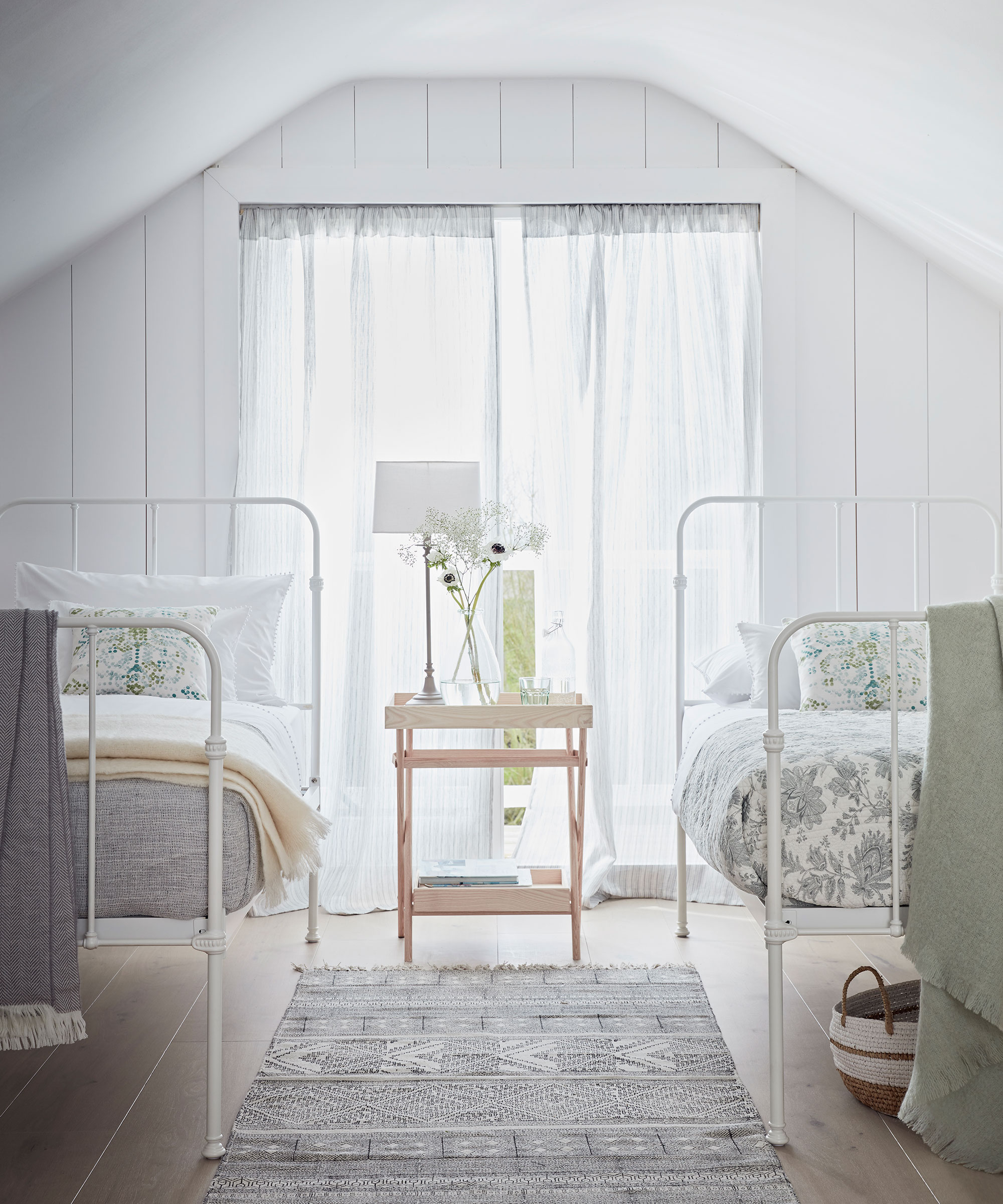
Illuminate your room in the same way as this white bedroom, with plenty of natural light. Window dressings like heavy curtains can be very light draining.
There are plenty of bedroom curtain ideas that make designing your sleep space a tailorable experience.
While thick black-out drapes may be tempting, they block out any natural light, meaning your scheme will be reliant solely on artificial lighting.
Fit a voile or muslin drape instead to enjoy a beautifully diffused light streaming into your room, while still offering some privacy.
11. Incorporate lights into your joinery
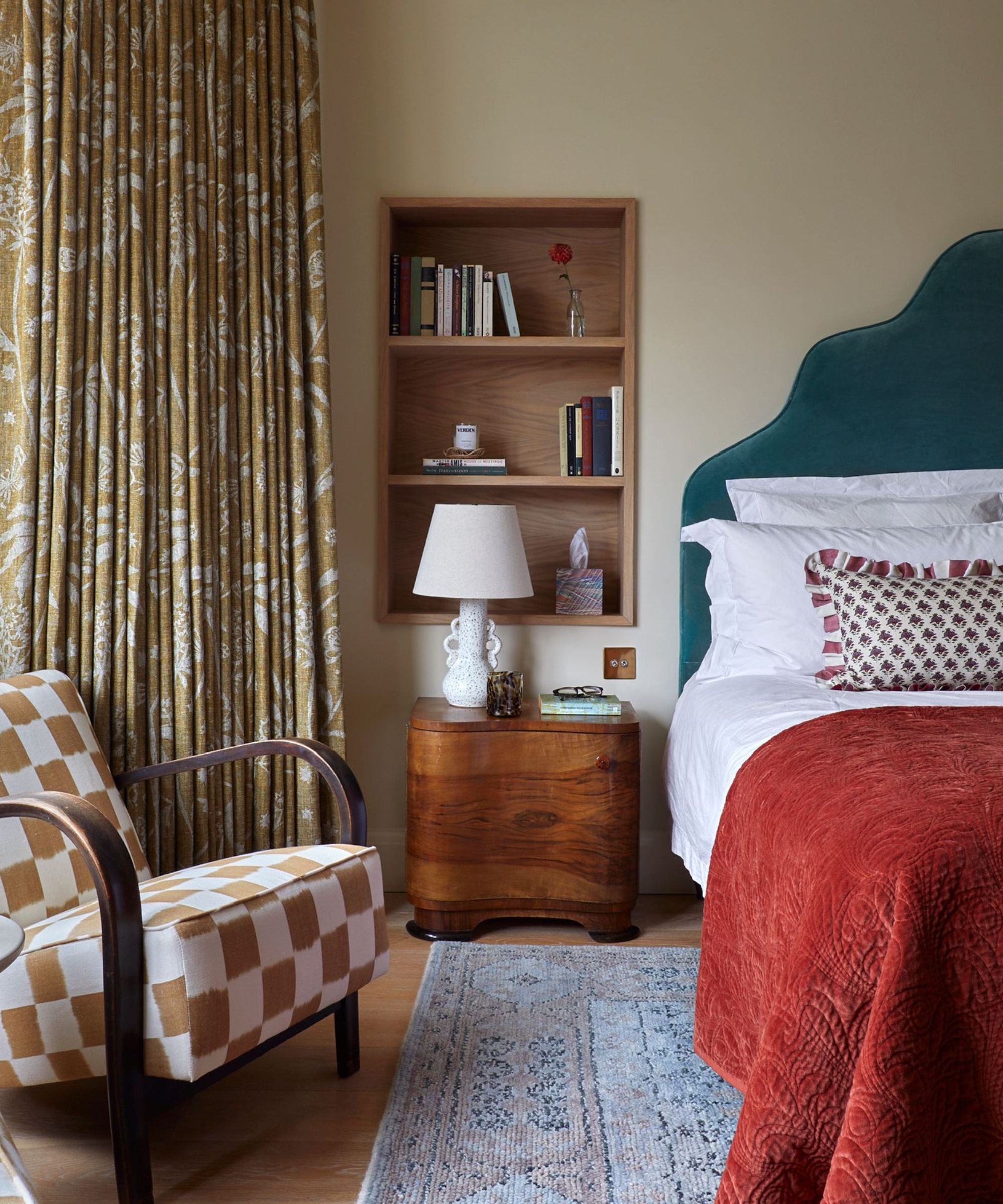
Incorporating bedroom lighting into joinery is the ideal way to add accent lighting to the room, especially in more contemporary solutions.
Whether you're using strip lights around the headboard of your bed for nighttime reading or fitting LEDs in your bedroom storage areas, built-in lighting ideas can assist daily activities while blending into the background of your design.
‘Under-cupboard lights fitted into shelving will illuminate objects, or LED contour stripes under bedside tables create a funky, floating effect,’ explains Sally Storey from John Cullen Lighting. 'And don’t forget a floor washer near the entrance to the bathroom to act as a night light.’
12. Install a statement pendant
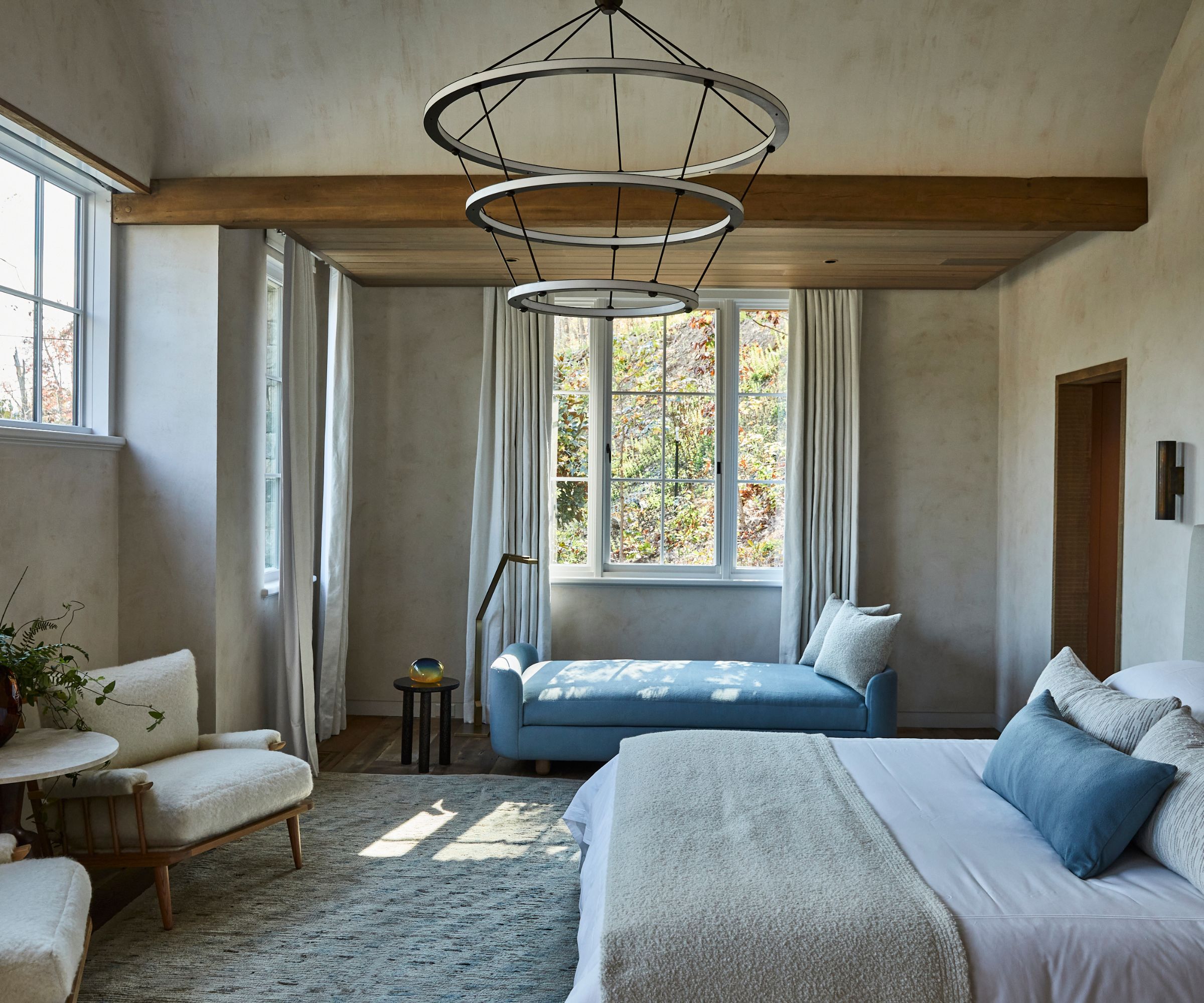
How big should my bedroom lighting fixture be? Well, that depends on the size of the room and the ceiling height. Whether you're following bedroom chandelier ideas or going for a contemporary lantern, pendants have become popular for their drama and are an easy accessory to add to your scheme.
Try hanging a pendant low over a desk or table, or perhaps three blown glass spheres suspended at different levels in the corner of a room or next to a bed.
While typically associated with luxury bedrooms, Christine Carney (designer of the space pictured above), Director of Design for Blackberry Farm Design says, 'Bedroom lighting can be an unexpected opportunity to play with scale.
A grand chandelier can anchor a bedroom without overpowering it, especially if its design is clean and restrained. Minimalism lets pieces breathe, so even relatively large fixtures feel calm, intentional, and perfectly at home.'
For on-trend lighting perfect for a contemporary bedroom, think big advises Helen, 'Statement lighting does more than illuminate, it anchors the room to draw the eye up, subtly enhancing the sense of height and space. Opt for a sculptural silhouette in refined material, to add a quiet layer of drama. Pair with tactile, understated accessories to create a stylish and unmistakably sophisticated sleeping space.'
13. Light a focal point
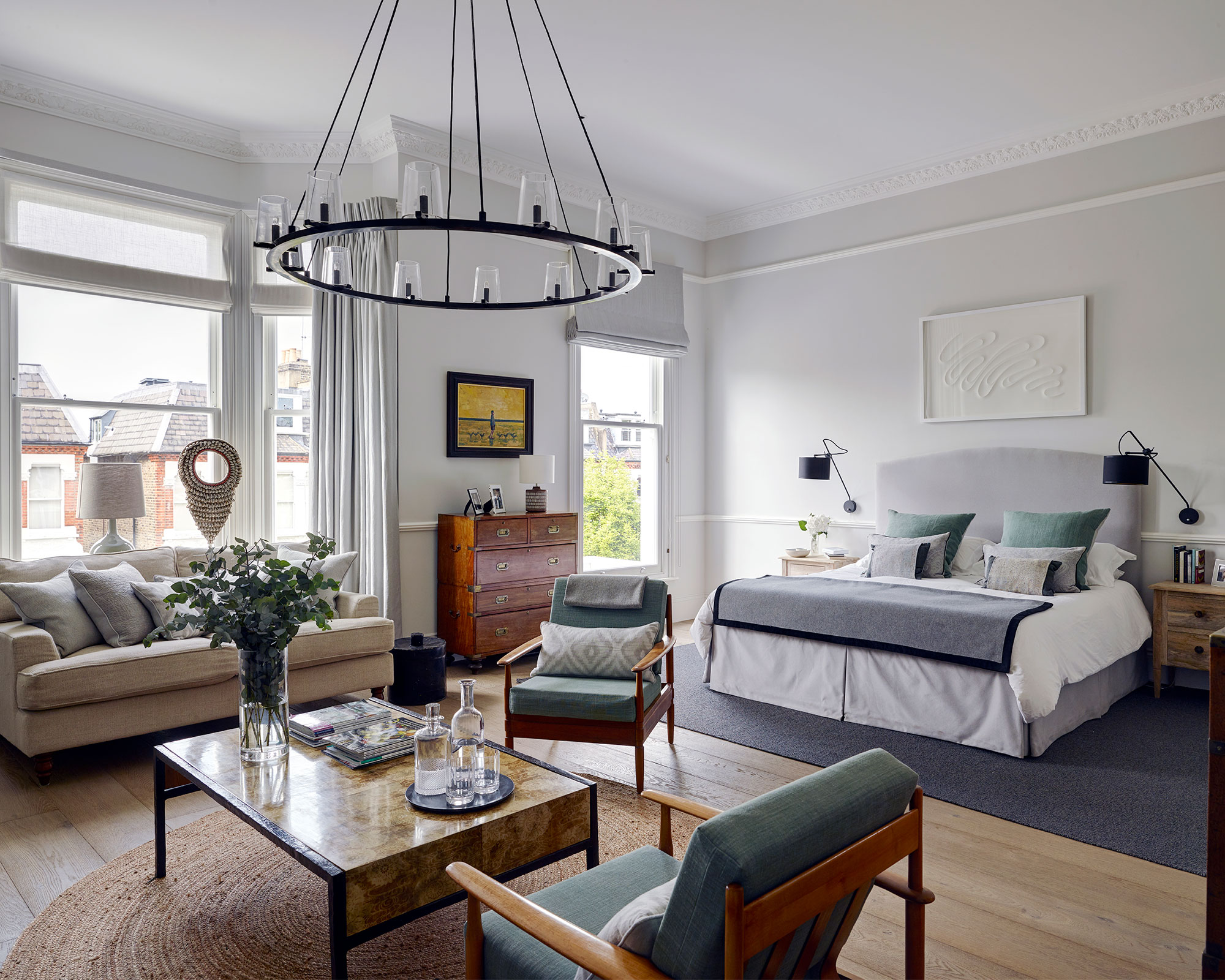
If you like striking headboard ideas or statement bedding, lighting them from above with a large pendant can produce a beautiful effect, while throwing light onto artwork adds texture.
If you're blessed with some interesting architectural features in your bedroom, create emphasis in your interior design. Highlighting a prominent fireplace or a tall window will bring illumination to the area, creating drama and making your bedroom design feel one-of-a-kind and impactful.
The bedroom (pictured above) is an example of drama in a scheme. Due to the size of the room, the designer created a separate zone for reading and lounging by adding a statement candelabra, transforming the once-dead space into a focal point.
14. Zone your bedroom lighting
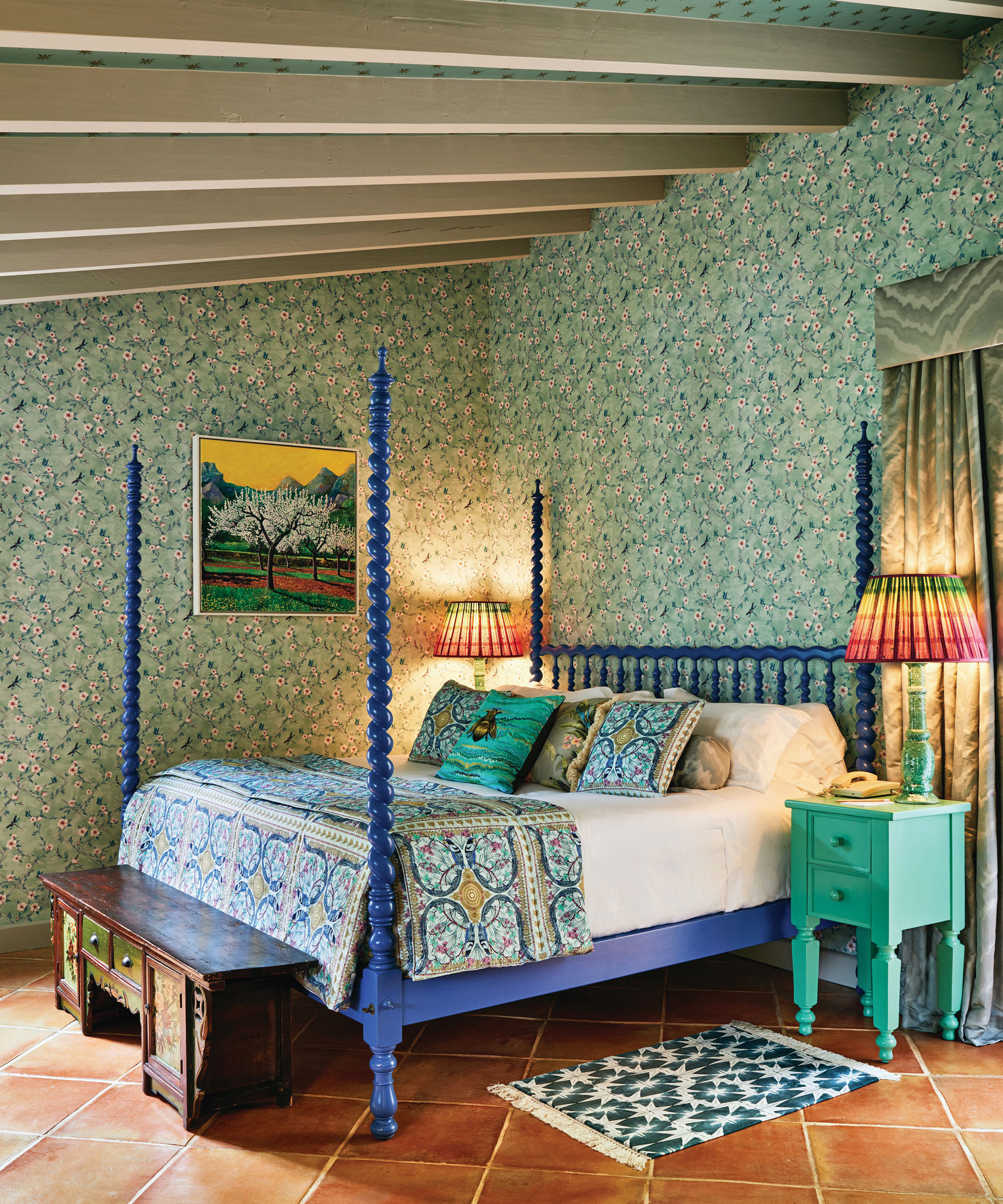
Zoning in interior design focuses on creating 'zones' within a room. The design method centers on the needs of the occupier, utilizing space by combining different areas into an overall space.
Many of us use rooms in our homes for multiple different purposes, so when it comes to bedroom design, zoning is a helpful tactic for ensuring your space is as practical (and also stylish) as it can be.
Matthew Williamson designed this bedroom at the Belmond La Residencia. He has designed many bedrooms but says this method is will create harmony.
'I like to create beautiful zones of light that add atmosphere as you move through a space. I have table lamps dotted all around a room to create spots of light. However many lights you think you need, you probably need more. One ceiling light and a table light is really just the starting point.'
15. Hang pendants above or beside the bed
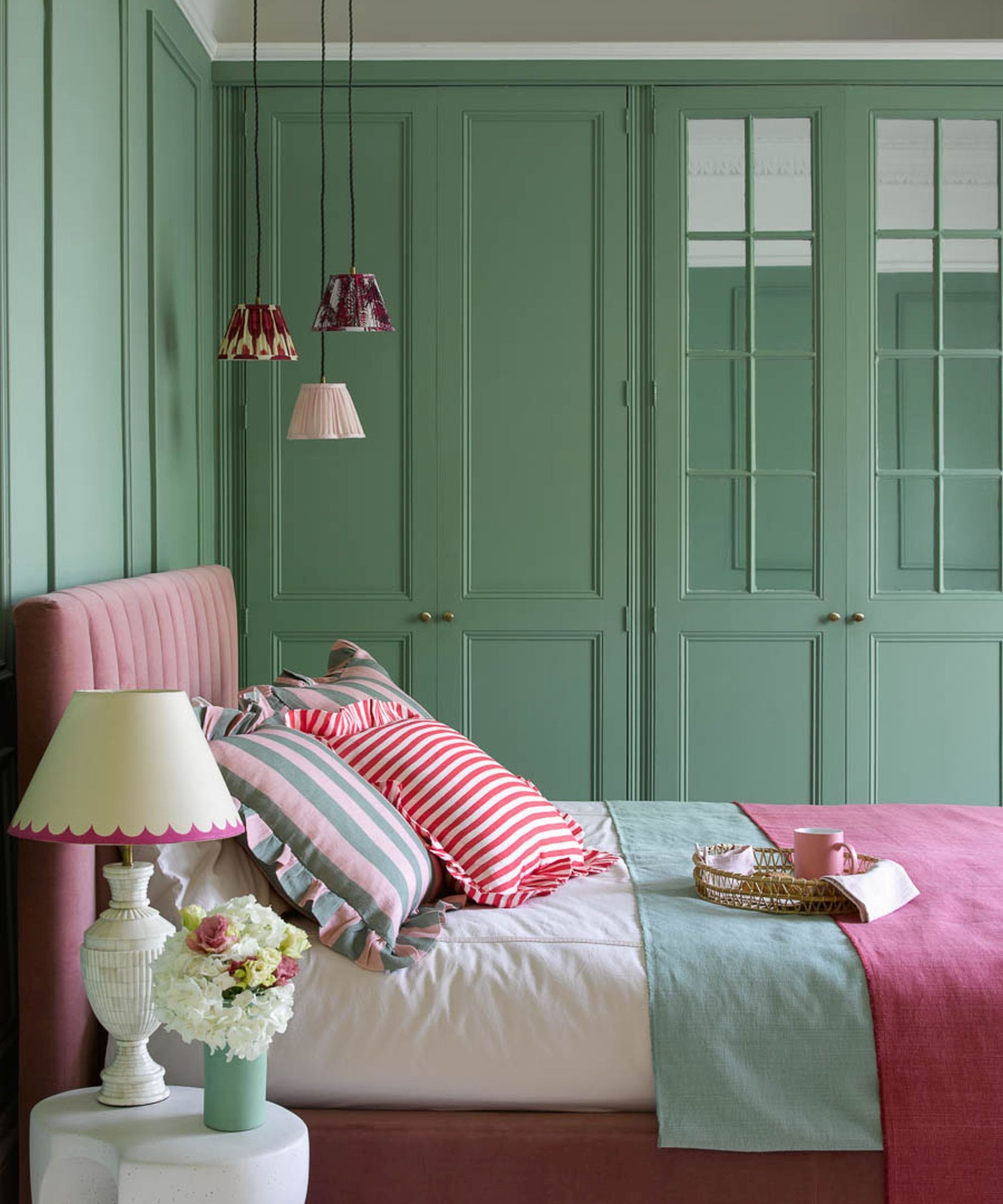
Small bedroom ideas can be a challenge to light, but with small windows, there are also places where lighting is most important.
The classic arrangement of table lamps on bedside tables on either side of a bed is not always possible when floor space is limited, so instead think vertically and consider hanging pendants from the ceiling down beside the bed.
Creating a sleep retreat at home is all about layering different types and heights of lighting, ensuring that when evening arrives, you have the option to dim lights and keep lighting above the bed on for reading or watching TV.
As well as saving space these two suspended ceiling lights can 'add further symmetry to the bedroom, highlighting the artwork above the headboard, and accenting the unique combination of colors that range from the cushions to the bedspread to the walls,' explains Emil Humbert & Christophe Poyet at Humbert & Poyet.
16. Choose ambient wall lights
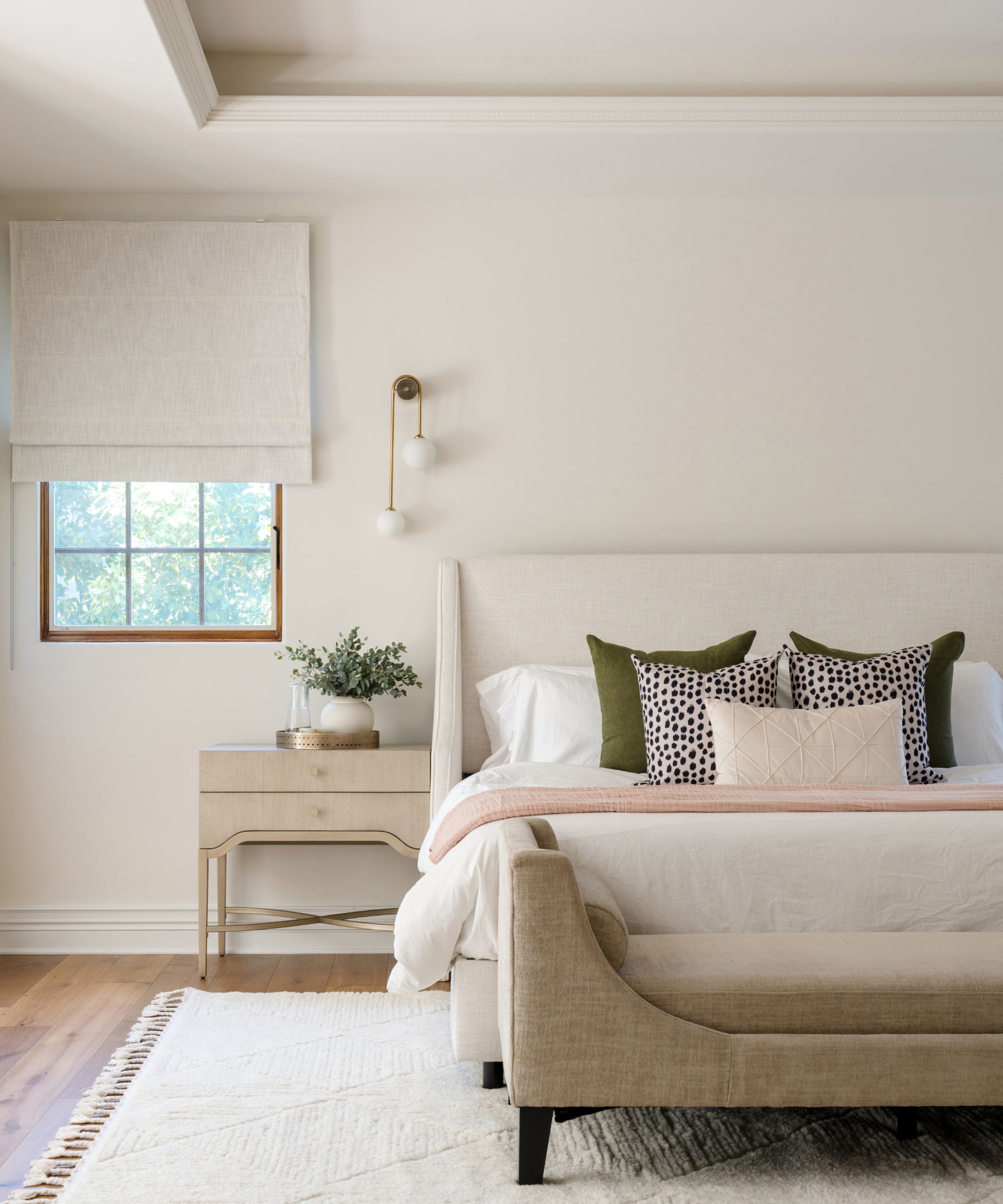
Wall lights will elevate your bedroom design, providing you with a source of concentrated light for reading in bed. Ambient wall lights are even better, as they can be dimmed and adjusted depending on the time of day.
Relaxing bedroom ideas incorporate a lighting scheme that's suitable for all seasons and moods explains Charlie Bowles, director of Original BTC. ‘Bedrooms are practical as well as relaxation spaces, so plan your lighting accordingly. Use a mixture of task, mood, and accent lighting to create a layered scheme that will work at any time of day and across the seasons – cozy in winter, light and airy in summer.’
As well as the type of light, it is also important to think about fittings. When space is at a premium bedroom wall lights can be a stylish and practical solution for introducing ambient light as they are 'great space-savers in small, low-ceilinged rooms and are ideal for creating a clean, boutique hotel look,' adds Charlie.
17. Consider non-conventional lighting like candles
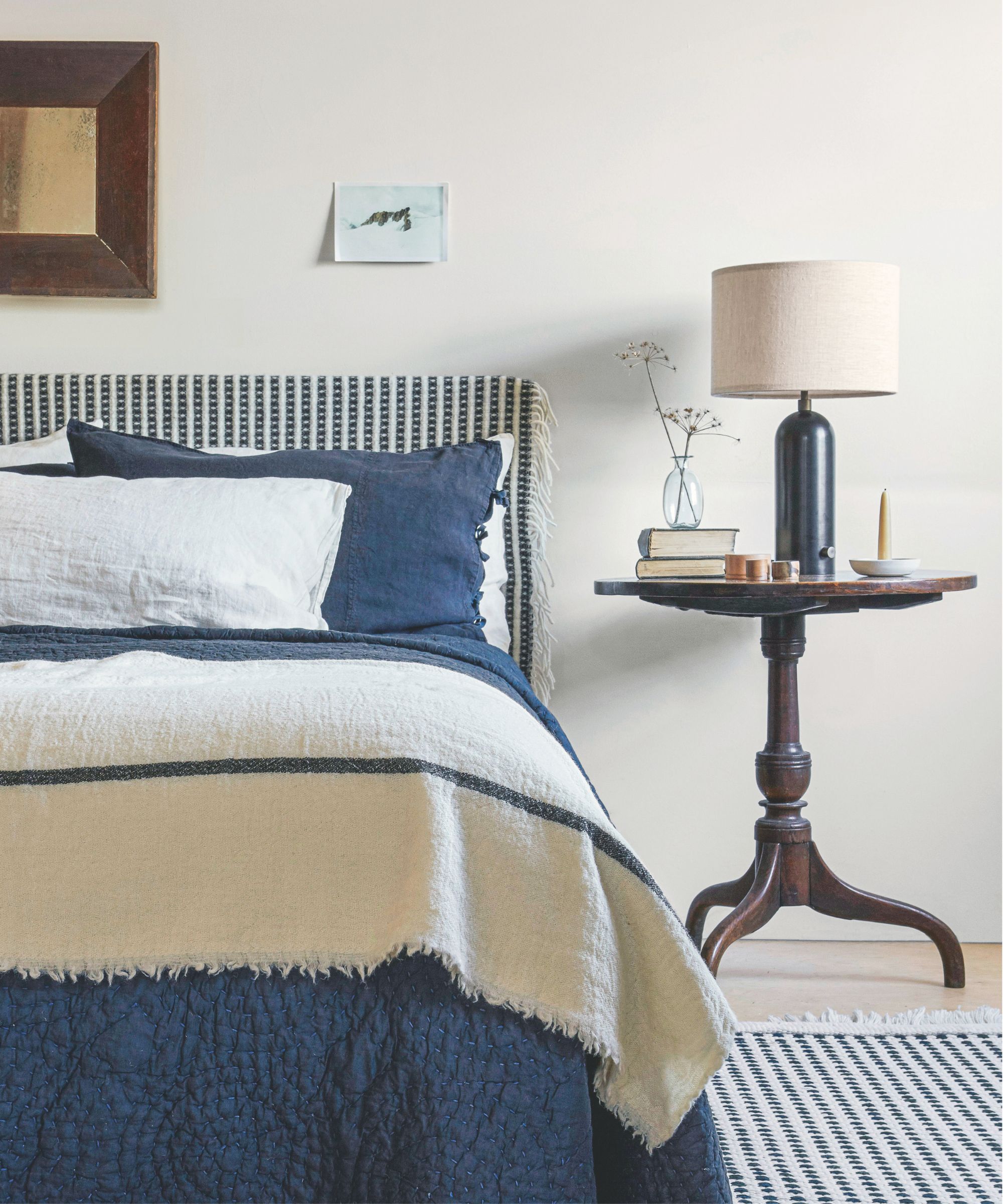
Conventionally wired lighting is not the only addition a bedroom needs, suggests Susie Atkinson, designer and founder of Studio Atkinson. ‘Real or battery-operated candle lamps are a nice addition to a bedroom or master bathroom to help create a romantic or cosseting atmosphere,’ she says. What’s more, they can help make a bedroom cozy, and make a bedroom feel warmer too – what's not to love?
Just remember to blow out your candle before you turn in for the day, to avoid any unwanted hazards!
18. Go classic with a large chandelier
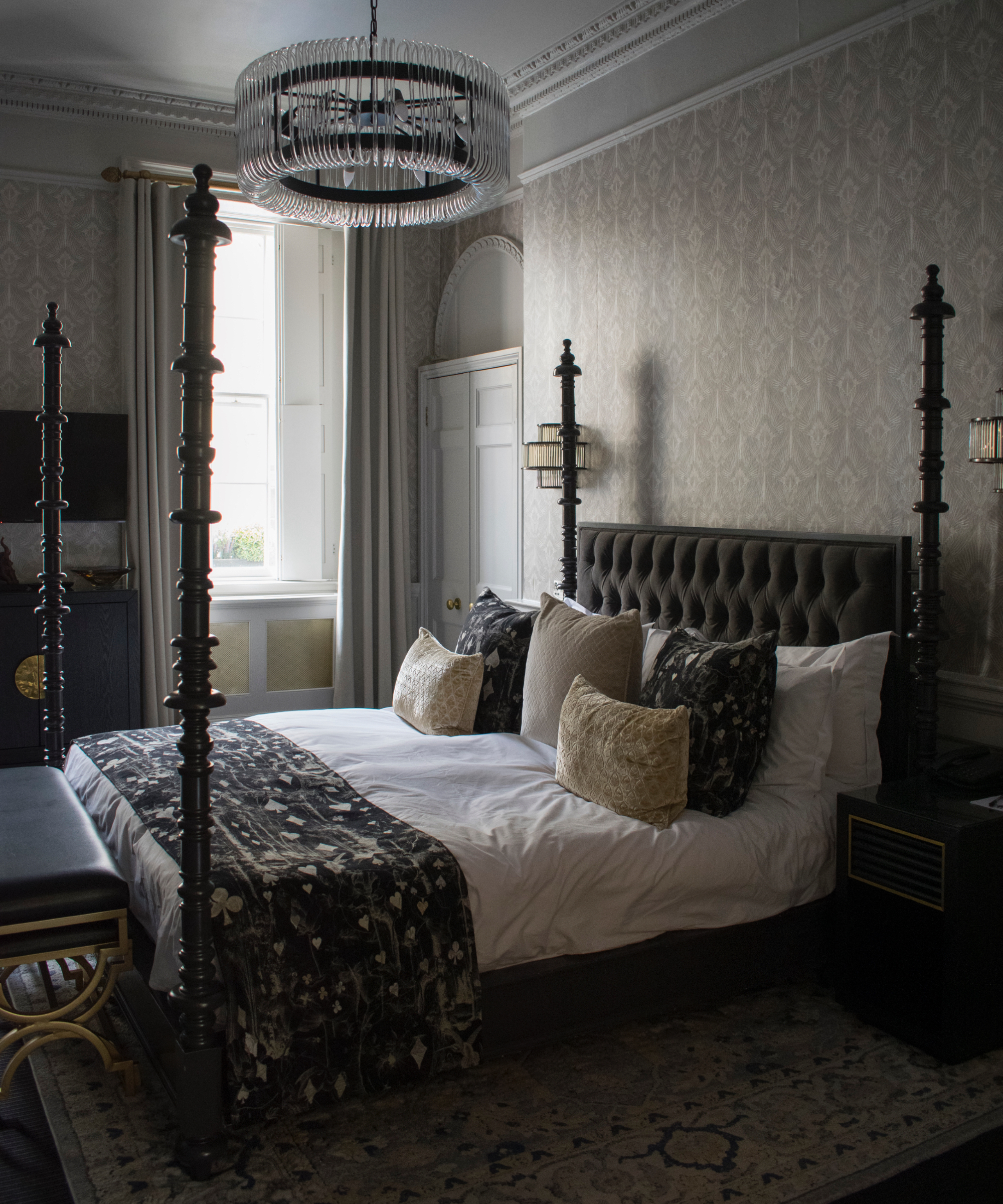
Long loved for their decadence and ability to transform a space, chandeliers are a great choice if you're looking to create a lasting bedroom design, be it traditional or contemporary.
Gray Walker, founder of Gray Walker Interiors is a fan of this classic accessory. She says, 'A central chandelier and bedside lamps or swing arm lamps are a great mix for bedroom lighting. A chandelier should always be on a dimmer switch so it can be adjusted for the time of day and how you are feeling. Bedside lamps are a great source of light in addition to your chandelier for a secondary light source at eye level.'
Remember to consider how low a chandelier should hang before fitting it above your bed, you don't want it to dominate the room.
Shop our bedroom lighting edit
FAQs
What is the best lighting for bedrooms?
A bedroom acts as a sanctuary from our extremely busy lifestyles, and a good lighting scheme should reflect that, creating a relaxing atmosphere that encourages a good night’s sleep.
Donna Grindley of Heathfield & Co lighting explains: ‘The first layer is ceiling fittings: pendants, chandeliers and down lighters for overall light. The second layer is wall lights, which create more subtle illumination and bounce shadows around a room. Then there are table lights – decorative, ambient lighting. The fourth layer is floor or standard lamps.’
You can add layers to existing schemes. LED strip lighting adds glamour to bookcases while a floor-standing up light will illuminate a dark corner. A designer bedroom lighting tip is to put a diffuser inside a lampshade to soften the glow.
Any light fitting will have two personalities, lit and unlit, so a piece may only reveal its full potential when illuminated. Something subtle in the day may become far more exotic once darkness falls, casting wonderful rays and shadows, so consider its effect on a room at all times of the day.
How can I improve my bedroom lighting?
‘Good lighting is mood enhancing. The most important thing with all lighting is that it should be dimmable. Generally, I prefer low-level lighting, as it’s more ambient, flattering and atmospheric,’ explains interior designer Sophie Ashby.
‘I would rely on table lamps, floor lamps and wall lights rather than spotlights, and I like a combination of vertical uplighting and downlight. I love using wall lights as bedside lights because they free up valuable tabletop space and, as they are a bit higher, they direct the light in a much more useful way.’
Lighting can completely transform a room. From a simple dimmer switch to create a moody feel to a bright spotlight that draws attention to details, a clever lighting scheme can make more of every room in your home.
A fitting doesn’t have to be big and bold to add wow-factor to a scheme. Just by being creative with shape, proportion, volume and materials you can instantly transform your room. Something as simple as the symmetrical placement of a pair of table lamps can help balance an interior scheme.
Pendant, wall and table lights should add to the design and enjoyment of the room. Soft, atmospheric lighting that doesn’t create glare can be achieved with angled downlight from the ceiling, while pendants next to the bed that hang between 100 and 150cm from the floor add a beautiful touch.
Successful bedroom lighting can transform a dull or clinical room into a cozy, inviting haven. Before you start hunting for your perfect lamp or pendant, consider exploring the latest bedroom lighting trends for 2025, for some beautiful and fresh design inspiration.

Jennifer is the Digital Editor at Homes & Gardens, bringing years of interiors experience across the US and UK. She has worked with leading publications, blending expertise in PR, marketing, social media, commercial strategy, and e-commerce. Jennifer has covered every corner of the home – curating projects from top interior designers, sourcing celebrity properties, reviewing appliances, and delivering timely news. Now, she channels her digital skills into shaping the world’s leading interiors website.
- Pippa BlenkinsopContributor
- Eleanor RichardsonInterior Design News Editor
